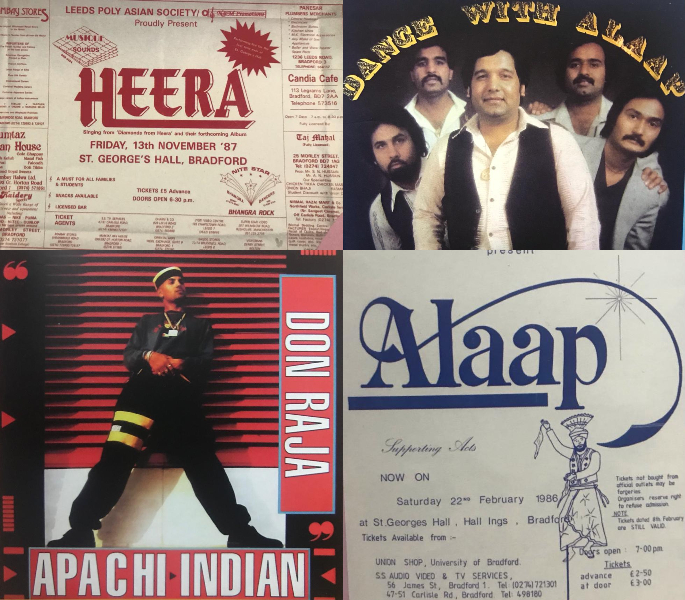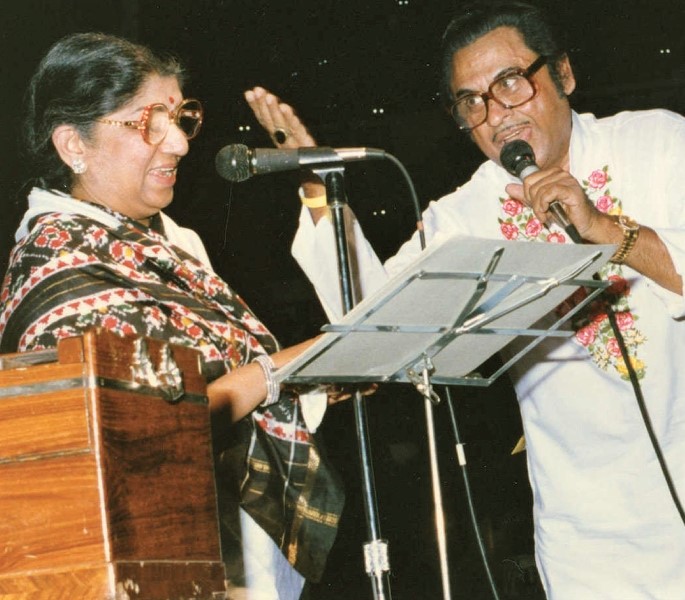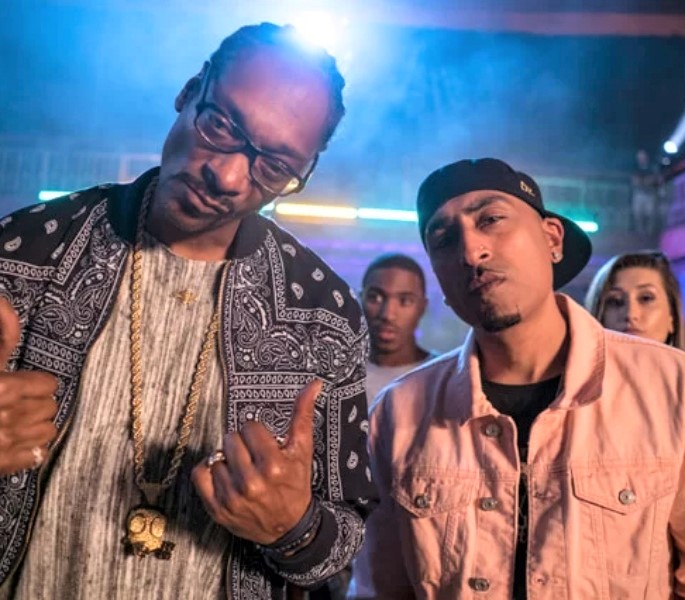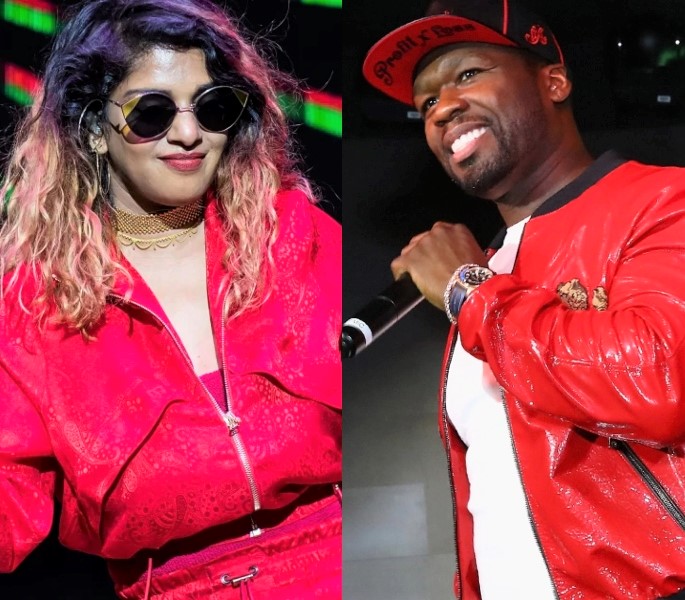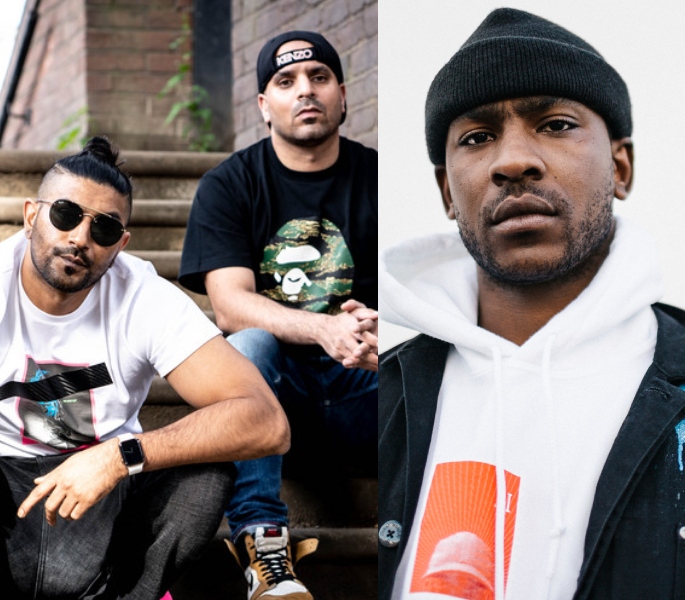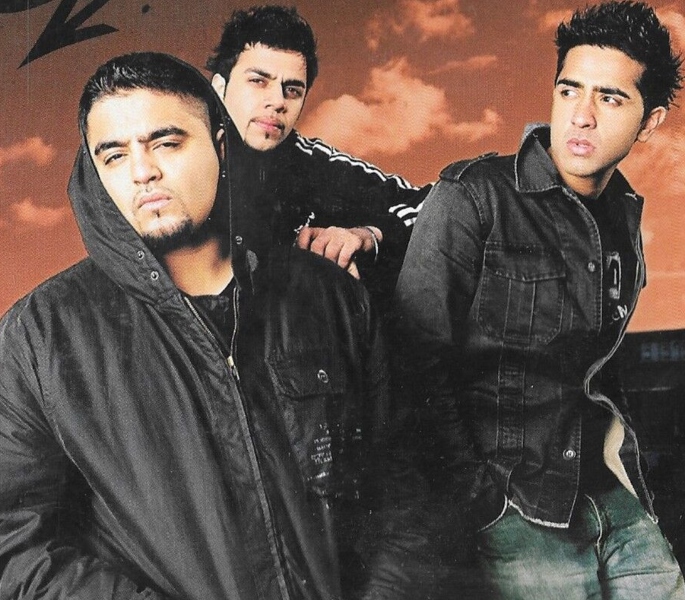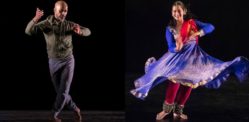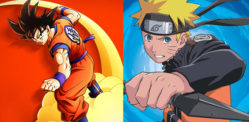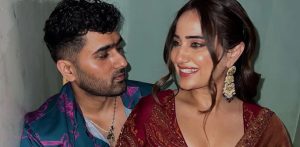"One of the best music pieces we 90s kids had heard"
From Bollywood to hip hop to pop, British Asians have loved popular styles of music since the 70s.
Whilst some genres like Bhangra and garage formed the early foundations of British Asian music, the diversity of other styles has grown.
Not only have the likes of rap and Rnb become more experimental, but they’ve also seen an influx of artists from South Asian backgrounds.
Therefore popular styles of music have reached newer audiences and put a spotlight on more relatable musicians for British Asians.
DESIblitz dives further into the different genres that have become so adored by the South Asian public in the UK.
Bhangra & Punjabi
It will come as no surprise that one of the most loved styles of music is Bhangra.
With the music style of ‘Bhangra’ cementing its mark in the early 80s onwards, the British Asian public became obsessed with this unique style of sound that combined traditional Punjabi songs with western instruments.
This style of music was born in the UK with bands like Alaap, Premi, Heera, Azaad, Apna Sangeet, Malkit Singh (Golden Star), Pardesi, Achanak, Safri Boys and many many more performing unforgettable live gigs.
It was also the era of ‘daytimers’ when many students bunked school and college to watch their favourite bands perform at clubs up and down the country.
During this time, booking bands was a must for weddings and each band had popularity with their fans. Which band performed at a wedding was the talk of the guests and families.
Music producers like Kuljit Bhamra and Deepak Khazanchi were pioneers in creating this loved sound of Bhangra.
Record labels like Oriental Star Agencies, Multitone and Arishma were at the forefront of releasing recorded Bhangra music.
Popular albums from that time included Alaap’s Teri Chunni De Sitare (1980) and Dance With Alaap (1982) and Premi’s Premi No.1 (1988).
Likewise, Heera’s Cool & Deadly (1990) and Diamonds from Heera (1992) are equally iconic, as well as Drum’n’Dhol (1989) by Azaad, and Legends and Get Real (1992) by Safri Boys.
Albums and singles by the Bhangra bands became big sellers with some achieving platinum disc status and beyond.
The following of Bhangra music by its fans gave them a form of identity in the music landscape of the UK. It became something that was their ‘own’ style of music.
The advent of the DJ in the UK, in the 2000s gradually deprecated the sound of live Bhangra music and bands became history.
The new sound of Punjabi music from India started to gain popularity.
The video became a staple addition to music especially since YouTube made this music more accessible.
Artists like Diljit Dosanjh, the late Sidhu Moosewala and others started to stamp their authority on the sound of modern Punjabi music, which has now gained tremendous popularity.
So much so, that Dosanjh was chosen to perform at the legendary American music festival, Coachella, in 2023.
The jam-packed weekend has hosted iconic artists across the years and Dosanjh has made history by being the first-ever Punjabi artist to be booked for the show.
So, it shows how this genre of music has grown from the British underground to the world stage.
Bollywood
Since the early 50s, legendary Bollywood singers like Mohd, Rafi, Kishore Kumar, Lata Mangeshkar and Asha Bhosle provided even UK listeners with a connection to their homelands.
Bollywood music sales were quite significant in the 70s and 80s with vinyl and cassettes being popular forms purchased by fans.
It was also the era of music directors being a part of the music’s arsenal.
Directors such as Laxmikant-Pyarelal, RD Burman, Kalyanji–Anandji, Bappi Lahiri and Jatin-Lalit were major contributors to the original and live orchestrations recorded for the music.
The 90s can be crowned as an era of Bollywood music that stole the hearts of its fans.
With singers like Kumar Sanu, Udit Narayan, Alka Yagnik, Sonu Nigam, Shaan, S.P. Balasubrahmanyam and Sadhna Sargam recording and performing hits live, this music attracted huge audiences at concerts in the UK and abroad.
Although for some, Bollywood has lost its luster.
But for new fans of the new era with singers like Arjit Singh, Arman Malik, Harrdy Sandhu and Shreya Ghosal, the music still has its popularity firmly in the mitts of its lovers.
YouTube today is a major aspect of Bollywood music. Where for new and existing song releases, millions of views are recorded.
Fans are always eager to watch and listen to songs from new films on the platform.
Streaming has taken over buying Bollywood music, so often, production companies will now release singles from movies onto YouTube to build traction for the film’s release.
However, there is a debate about whether the music coming out of Bollywood is better than the actual movies.
Whilst this is subjective, it’s no secret that the industry doesn’t hold the stance it once did.
This could be down to an overhaul of online streaming platforms and music services or the storylines themselves.
However, one thing has remained consistent from the glory days of Bollywood and that is the love for playback singers, new and old.
Hip Hop
Hip hop is perhaps one of the most loved styles of music by British Asians, especially in the modern day.
In the 90s and early 2000s, Tupac, Biggie Smalls, 50 Cent, Dr Dre, Snoop Dogg and Eminem dominated the charts in both America and the UK.
The popularity of these artists was formidable. They helped popularise hip hop on a world stage and actually paved the way for it to be accepted by mainstream music stations.
Hip hop itself is arguably the most famous form of music in the world.
But, what people may not know is a lot of megastars like Kanye West, Jay Z and The Game have sampled South Asian music in their songs.
The Game sampled Lata Mangeshkar & Mohammed Rafi’s ‘Baghon Mein Bahar Hai’ on his 2005 track ‘Put You on the Game’.
In 2013, Travis Scott used sounds from Asha Bhosle’s ‘Kamar Meri Lattu’ in his project ‘Uptown’ with A$AP Ferg.
Even back in 2007, one of the pioneers for South Asians in hip hop, M.I.A, sampled Parvati Khan’s ‘Jimmy Jimmy Jimmy Aaja’ in her song ‘Jimmy’.
So, there has been a longstanding presence of South Asia within hip hop.
And, this is one of the reasons why British Asians love this genre so much.
The relationship between Desi artists and hip hop stars has also proven successful.
American rapper Snoop Dogg has worked with multiple South Asian artists like Dr Zeus for ‘Woofer’, Bohemia for ‘Favourite Spot’ and RDB for ‘Singh is Kinng’.
RDB themselves have linked up with western musicians like T-Pain for ‘Daddy Da Cash’ and Ludacris for ‘Shera Di Kaum’.
So, there’s always been examples of how strong the relationship is between South Asia and this music genre.
It’s this foundation that has led to an influx of British Asians within hip hop, like M.I.A and Raxstar.
However, it comes as no surprise that American artists still hold the power when it comes to streams and views.
Drake, The Weeknd, Nicki Minaj, Kendrick Lamar and J Cole continue to release chart-topping projects and the love for their music from British Asians is undeniable.
Although, South Asian artists like NAV and Fateh are paving the way for more representation in this space.
Rap
Rap music is a subcategory of hip hop, however, in modern times, the ability to rap doesn’t necessarily mean you belong to one genre of music.
One of the earliest memories of rap music really igniting in the UK is from Apache Indian’s 1993 smash hit ‘Boom Shack A Lack’.
The song fused reggae, rap and garage to create an entirely new sound. It also highlighted the way rap could be manipulated to reach certain audiences.
This was especially important in the 90s when certain communities were made up of just black and South Asian families.
Going into the early 2000s is when rap music really started to take off. Artists such as P Diddy, Nas, 50 Cent and Dr Dre were really shining a light on American rappers.
In turn, releases went viral across the UK and many British Asians fell in love with the gritty unapologetic nature of these songs.
Tracks like ‘In Da Club’ by 50 Cent, ‘Lean Back’ by Fat Joe and ‘Drop It Like It’s Hot’ by Snoop Dogg rang out across communities for their fresh beats and verses.
And, whilst American rap songs were at the forefront of clubs and parties, they also influenced musicians like M.I.A. to really experiment with rap and production.
The artist’s 2007 megahit ‘Paper Planes’ was a worldwide phenomenon for its raw British sound.
The effortless and almost nonchalant approach to her raps meant M.I.A. brought an entirely new vocal composition to this genre of music.
Her British vocals were plastered all over the song and it was eventually sampled by music mogul T.I. for his track ‘Swagga Like Us’ which won a Grammy Award for ‘Best Rap Performance’.
However, there are now musicians who use rap in all sorts of different styles to cater to their fanbase.
Hyphen, JJ Esko, Jay Milli, and Koomz are all British Asian artists in rap music. But, their lyrics span more than just one genre.
From Punjabi music to poetic rap, fans are getting treated to a wide range of musical abilities and refreshingly, the genre is getting accustomed to more UK-based artists.
Certainly, after 2010, there has been a surge of UK talent in the charts.
Whilst originally this was down to pop singers like Ed Sheeran and Adele, in recent times, the amount of recognition UK artists have, especially from British Asian backgrounds, is quickly increasing.
Most notably, producer Steel Banglez has been behind some of the UK’s most popular hits like ‘Fashion Week’, ’47’ and ‘Bad’.
Garage & Grime
Garage and grime music have been around for decades in the UK. They’re seen as the building blocks to some of the songs and albums we see in mainstream charts.
Garage itself is one of the earliest genres of music that British Asians came to love in the 90s and early 2000s.
During this period, daytime raves were at an all-time high.
Venues were filled with British Asians on sweaty bass-filled dance floors, rocking out to bhangra, hip hop and garage mash-ups.
These events were daytime raves that those in South Asian households could go to, as they weren’t allowed to go to traditional nightclubs in the evening. Some would even bunk off school to attend gigs.
Rave culture was such a staple of the UK music scene during this time that it gave British Asians an identity that didn’t need a ‘white’ co-sign.
These dancers and music lovers were able to express themselves to music and culture that they created on their own terms.
Notable artists that would bellow out of speakers were SurjRDB, Metz n Trix, and Indy Sagu.
RDB’s 2002 track ‘Aja Mahi’ which featured Metz n Triz is one of the most unforgettable songs.
It really brought in British Asian listeners and it’s still listened to today. This was followed up in 2003 by Indy Sagu with his song ‘Aja Soneeay’.
Simtuatenously, grime songs were also creeping their way through fans’ speakers and being shared via Bluetooth.
Programmes like Channel U used to broadcast underground grime artists like Giggs, Skepta, Tinie Tempah and Ghetts.
This motivated rap platforms like SBTV, Link Up TV and GRM Daily to emerge on YouTube to help promote local grime artists from all corners of the UK.
Grime was a game changer for the UK scene and gave a real insight into the struggles of under-deprived areas and communities. It resonated with British Asians due to this.
However, the content of these songs was also seen as a “bad influence” by older South Asian immigrants who would forbid their children from hearing them.
Therefore, listening to the songs and having to keep it a secret added to the genre’s appeal.
Grime also birthed another sub-genre called drill which is one of the most popular styles in modern-day British music.
Drill is very much symbolic of the early periods of grime that spoke on violence, hardships, and challenges of poverty.
Central Cee, Digga D, Unknown T and Headie One are all pioneers of the sound. But now, more British Asians are also releasing drill tracks.
Artists like Ibby, Loose1 and Sliime are not afraid to move outside of the box and reinvent the wheel for a new wave of stars.
Whilst drill and grime are at the forefront of the music scene, especially the underground, garage is also making a comeback after falling off.
It’s seen a resurgence with DJs like Gracie T, Chande and Yung Singh who have reignited the vibrancy of Punjabi garage through their collective, ‘Daytimers’.
Their sets on Boiler Room are something to behold and combine those retro hypnotic wobbles with tracks like ‘Ladki Badi Anjani Hai’, ‘Daroo’ and ‘Dhol Jageero Da’.
See some of those iconic sets here.
RnB
When it comes to styles of music, British Asians have been infatuated with RnB for decades.
The genre bridged the gap between fans and their favourite artists, sharing vulnerable experiences and emotions through lyrics.
The likes of Usher, Chris Brown, Mariah Carey and Beyonce popularised the RnB sound amongst the UK public.
But, the issue remained that there were no solid British Asian Rnb musicians.
That was the case until Jay Sean broke onto the scene in the early 2000s with Juggy D and Rishi Rich.
In 2004, the trio gathered attention with their debut single ‘Dance With You’ which reached number 12 on the UK Singles Chart.
His subsequent hits like ‘Eyes On You’ and ‘Push It Up’ led the singer to major collaborations with artists like Rick Ross, Sean Paul and Lil Wayne.
In terms of music, Jay Sean is perhaps the UK’s most famous South Asian export and he was a trailblazer in bringing a new audience to RnB music.
Finally, fans got to see people that they could relate to on prime-time TV and radio.
The legendary artist became a household name by 2009, especially when he released ‘Down’ with Lil Wayne.
The single made history as Jay Sean became the best-selling British male artist in North America since Elton John.
Whilst his notoriety died down after 2010, a new star would burst onto the scene in Zayn Malik.
Formerly part of the iconic band One Direction, which was put together in 2010, it was Zayn’s solo career after he left the group that would see him blow up.
The singer was known for his quiet and mysterious persona which suited the RnB genre well. So, he managed to drive forward more representation within the music industry.
Subsequently, RnB singers like Joy Crookes and Priya Ragu have emerged as unique talents that suit this new wave of British Asian artists and fans.
More South Asian listeners in the UK are paying attention to homegrown and local talent that they can relate to and that “look like them”.
It’s why there is now more of a spotlight put on British Asian musicians and they’re being given bigger platforms to showcase their music.
BBC Introducing is one of those channels, as well as festivals like Glastonbury, Leeds and Reading.
For example, Asha Gold and Pritt are both upcoming RnB singers fusing their heritage with soulful melodies to produce an innovative and fresh RnB sound.
Pop
Pop music in the UK has always been mainstream songs that feature in the charts and are usually released by huge stars.
It’s never been a genre that promotes alternative sounds and usually stays in one lane.
Whilst British Asians were attracted to pop songs, it’s no secret that Bhangra, garage and hip hop still reigned supreme as the most listened-to genres in the 80s and 90s.
Although, famous alternative band Cornershop brought a new lease of life to the genre with their 1997 anthem ‘Brimful of Asha’.
Not only was the song catchy, but it was also inspired by Bollywood and a tribute to legendary playback singer Asha Bhosle.
The track was later remixed by musician Fatboy Slim and reached number 1 on the charts.
From this moment came a succession of milestones for British Asians in pop music.
In 2001, Susheela Raman was the first British Asian female to be nominated for Mercury Prize for her debut album, Salt Rain, blending Tamil music with pop and jazz.
Dr Zeus, one of the most consistent producers since 2000, delivered ‘Don’t Be Shy’ with the girl band Rogue in 2004.
It was one of the first instances that an all-British Asian girl group had been showcased on mainstream TV.
Fans adored the song for its Desi pop sound and one listener, Ananya Verma commented on YouTube:
“One of the best music pieces we 90s kids had heard.
“Most importantly even today it’s way better than today’s songs. This song was way ahead of its time.”
From this period to 2013, the likes of Raghav, Jay Sean, Jazzy B, Nitin Sawhney and RDB shone in South Asian communities.
But once again the interest from the British Asian public in pop music was reignited with Naughty Boy’s 2013 hit ‘La La La’.
Teaming up with pop megastar Sam Smith, the song reached number one globally and has over 1.1 billion views on YouTube.
The producer burst onto the scene and attracted millions of fans as well as attention from British Asian fans.
He has even collaborated with the legendary Beyonce for the 2016 anthem ‘Runnin”.
It was one of the biggest crossovers between a British Asian and an American artist that produced a pop classic.
Since then, in a similar fashion to RnB, emerging singers from British Asian communities have gotten the recognition they once wouldn’t have received.
Some names include Ava Sehra, Hana Malik and Jasmine Jethwa. Even half-Indian singer, Charli XCX, has become one of the staples of British pop music.
This has all led to an infatuation with the genre and the way these musicians are now able to experiment more with sounds to create a new version of the style.
Breaking away from this norm is much more accepted in the modern day than it was decades prior. And, we are seeing it in almost all of these popular styles of music.
British Asian fans adore this deviation from the normal parameters of music genres.
After all, this defiance against the standard is what bred music lovers of past generations.
Therefore, it’s refreshing to see this tradition alive once again and British Asian artists and fans thriving in this diverse musical climate.




















































